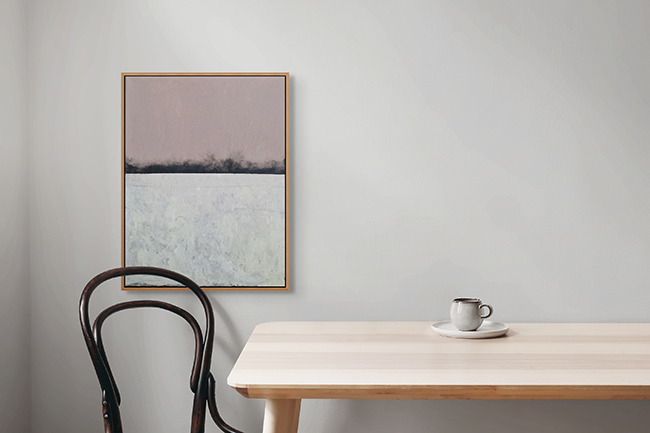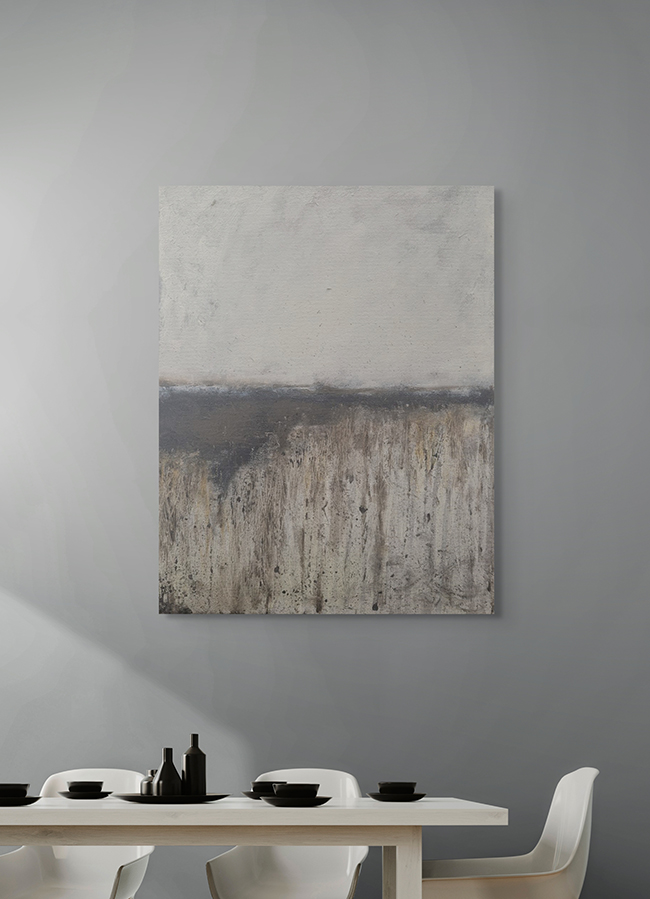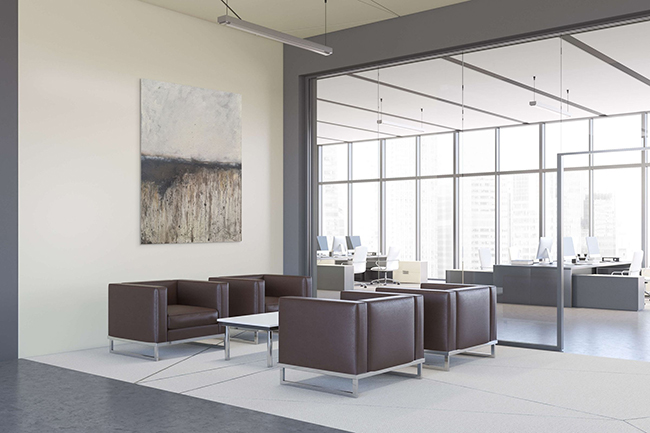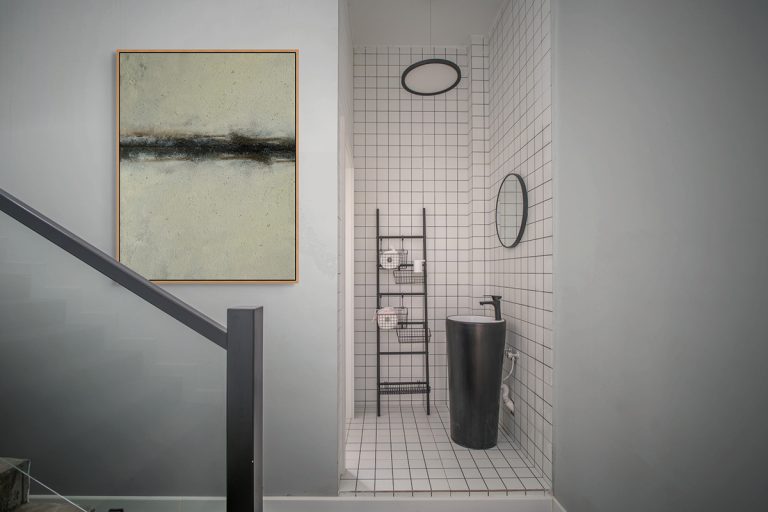Blake Weston was born in Newport, Wales, and has been circling around art for most of his life. He studied Fine Art in Gloucestershire before moving on to Cardiff University, where he began with Time-Based Art under the conceptual wing of Andre Stitt. Eventually, he found himself pulled back toward painting in his final year. That shift—away from process-heavy art toward something more tactile—has defined his work ever since. Blake is currently preparing to pursue an MA in Fine Art. He sees painting not as a craft to perfect, but as a space for exploration. He wants his work to catch the eye and hold it, like a well-written song with just enough mystery to keep you listening. His love of abstraction grew in part through work in theater in Finland and Russia, where he built sets and trained as a welder. You can see echoes of that: scale, structure, physicality. For Blake, the canvas is a question, not a solution.

The paintings Blake Weston now produces are rooted in atmosphere—thick with silence, movement, memory. They tend to lean toward abstraction, but they don’t entirely let go of landscape or depth. Many sit on the edge between something natural and something emotional. There’s a kind of push and pull happening: you’re not sure if you’re looking at a field, a dream, or the residue of sound.
That uncertainty is part of the point. Blake’s work doesn’t try to pin anything down. Instead, it asks: What does this surface want to say? What kind of space can a painting create?
Lately, he’s taken this further by launching a company that produces artwork specifically for interior design settings, with a side focus on acoustic panels. That’s a different kind of purpose: creating paintings that don’t just hang on the wall, but serve the room. It’s not about making decor—it’s about how art can shape a room’s feel, both visually and sonically.

There’s a practicality to it, but he hasn’t abandoned the integrity of the work. The acoustic panels are designed not just to absorb sound but to offer a quiet kind of visual weight. They can hang in an office or a dining room and hold space without demanding it. His textures remain present, subtle. There’s a palette here that stays mostly neutral—grays, creams, umbers—but there’s always something underneath. A scrape of paint. A horizon line that could be sky, or could be steel. Some works hint at landscapes but with the detail scrubbed out, softened into atmosphere.

Take the large-scale piece hanging in the modern office space in the first image. There’s an upward wash of vertical marks—almost like rainfall, or reeds. Above that, a dense horizontal band sits like a storm on the horizon. The upper field is pale, fogged. There are no people, but the painting feels inhabited, like something just left the frame.
In a different setting—a quiet café or breakfast nook—the same kind of work takes on new meaning. Framed neatly, the soft pinks and whites of the second image speak more like a whisper. Here, the horizontal line feels like a divide between winter light and early morning sky. You could stare at it while sipping coffee and feel something shift. That’s the kind of accessibility Blake is aiming for. It doesn’t shout. It sits with you.
Another large painting—shown in a dining space—shows similar markings to the first, but it’s more grounded. There’s something earthy in the bottom half, like dried grasses or scraped concrete. The top is soft, chalky, and open. The contrast creates a rhythm. And that rhythm—visual, emotional—is what Blake chases.
His interest in music shows up in how he talks about painting. He wants “hooks.” Not gimmicks, but visual moments you return to. Something unresolved, something stuck in your head. A phrase that doesn’t quite finish. That’s what he likes in painting. The sensation that the answer isn’t on the canvas—but maybe the question is.
Blake’s dual path—making fine art while designing for interior spaces—might seem split, but it’s actually connected. In both cases, he’s thinking about how people live with art. Not just what it looks like, but how it behaves. Does it change a room? Does it shift your day? Does it leave you wondering?
That’s the search he’s in. And by his own admission, it’s not one that ends. The goal isn’t a perfect image. It’s the feeling that something just out of reach has come a little closer.

